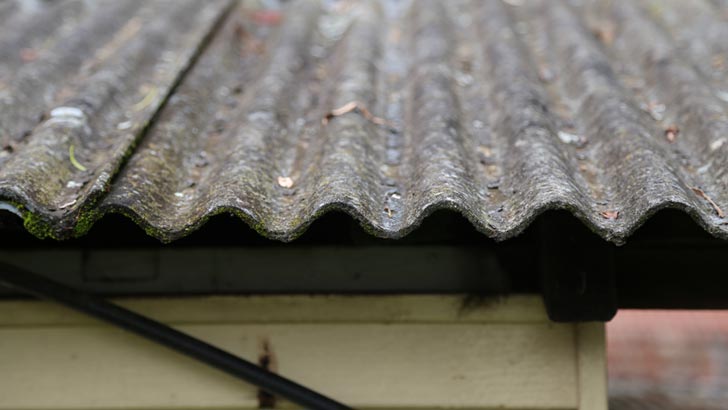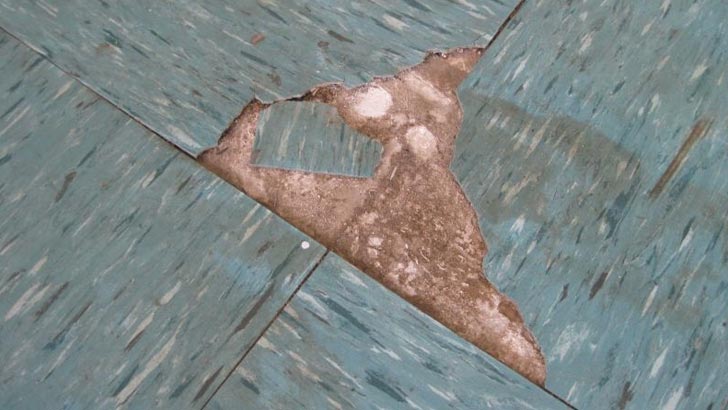Is this asbestos? How to renovate safely
By Georgia Madden
Asbestos has been back in the news lately, with contaminated mulch found at a waste facility in Ipswich, NSW, reportedly spreading as far as Queensland.
The health dangers of asbestos are well-documented, and if you're renovating an older home, it's a particular concern. According to the Asbestos in NSW website, asbestos was used in more than 3000 building materials prior to 1990, which means there's a good chance your house contains it.
But don't let that deter you: even if asbestos is present, you can still create the home of your dreams - so long as you follow the right removal and disposal procedure. And there are plenty of resources available to help.
What is asbestos?
Asbestos is a naturally occurring mineral consisting of microscopic fibres. It was a popular additive used in thousands of products across many industries from the early 1900s, including housing.
"When asbestos-containing materials are disturbed, these tiny fibres can be released into the air, posing significant health risks such as mesothelioma and lung cancer when inhaled," says Cherie Barber, a professional renovator and national ambassador for Asbestos Awareness.
Sealed asbestos in good condition is low-risk. Issues only arise when it is damaged, weathered or disturbed.
"That's why it's crucial to handle it safely to prevent exposure," she says.
You can visit the Asbestos Awareness website for information on how to identify and handle asbestos when renovating, including fact sheets, a free training program on how to spot and manage it, a room-by-room guide on what to look for, and more.
Which building materials contain asbestos?
Back in the day, asbestos was often used in wall and ceiling sheeting, bathroom floor panels, carpet underlays, vinyl floor tiles and adhesives, insulation, fireplace flues, lagging around hot-water pipes and more.
Outside, it was used in exterior wall sheeting, eaves, gutters, downpipes, roofing, fencing, concrete paths, garages, chicken sheds and even dog kennels.
The Asbestos in NSW website has a handy online tool where you can check where asbestos might be present in your home.
Friable versus non-friable asbestos: what's the difference?
Asbestos-containing materials are either friable or non-friable. Friable asbestos, which can be crumbled or reduced to a fine powder in the hand, is high risk.
Non-friable asbestos, which is mixed with cement or other hard bonding materials, is lower risk. Non-friable asbestos can become friable if it's old or damaged.
How common is it?
"Asbestos is found in many different types and styles of Australian homes built or renovated before the 1990s, with millions of properties estimated to still contain asbestos-containing materials," says Barber.
The risk reduces the more recently your property went up. "If your home was built or renovated before 1987, it is highly likely to contain products incorporating asbestos; before 1990 and asbestos and it's likely to be present, while homes built after 1990 are unlikely to contain asbestos," she says.

What should you do if you suspect you have asbestos?
"If you think your home may contain asbestos, it's essential to get an asbestos identification report done by a licensed asbestos assessor, ideally before you buy the property or [certainly] ahead of renovating," says Barber.
"A trained professional will visually inspect all areas of your property, identifying whether your property contains it or not, and where, so that proper precautions can be to manage or remove it."
According to the Asbestos in NSW website, a pre-purchased Asbestos Home Inspection by a licensed inspector costs around $400.
How do you remove it safely?
Every state and local government has its own legislation and policy regarding asbestos removal, so your first step should be to check with your local council.
"The best practice for removal is to engage a licensed asbestos removalist who adheres to strict safety regulations, outlined by the government authorities in each state," says Barber. "This includes proper containment of asbestos materials, removal using specialised equipment, techniques and protective attire, and safe disposal of waste in designated facilities."
It's important to note that asbestos waste can only be accepted at lawful sites and some might require notice or pre-booking. You can find your nearest asbestos-disposal facility here.
Can you remove it yourself?
If you're removing 10 square metres of non-friable asbestos or less and you live in any state other than the ACT, yes you can. For amounts over 10 square metres, you'll need to hire a licensed professional.
"If you decide to remove a small amount of asbestos yourself, ensure that it meets the Safe Work Australia guidelines in terms of the type of asbestos, the volume to be removed, and that you follow the protocol for removal, treatment and disposal," says Naomi Findlay, interior designer, professional renovator and principal at Findlay and Co Interior Design.
You'll find SafeWork NSW guidelines here, which is based on a national model code of practice.

What will it cost for professional removal?
The cost to have asbestos removed by a licensed professional will depend on a number of factors, including the age of your home, how much asbestos needs to be removed, and if it's friable or non-friable.
As a guide, the Asbestos Awareness website states that legally removing 300 kilograms of asbestos waste costs around $145 and over a tonne costs around $380.
How do you decorate safely around it?
"Painting over asbestos walls and ceilings can help encapsulate it and prevent exposure," says Barber. The important thing is not to disturb it. "With any building material product containing asbestos, don't cut, drill, sand, saw, scrape, scrub, waterblast, dismantle, drop or dump it," she says.
A home refreshed, and safe as houses.
Get stories like this in our newsletters.



